As a follow-up to my A day in the life of a Multiple Sclerosis caregiver, I have been asked what traveling is like as a caregiver for my wife who has Multiple Sclerosis. First, this will be about road trips. We do not fly. Do a little searching on the Internet or talk to people in a wheelchair, and you will hear the horror stories of flying with a wheelchair. Also, it would be so difficult and expensive to bring all the accessibility equipment we need on a flights. So what does is it like to road trip overnight as a caregiver?
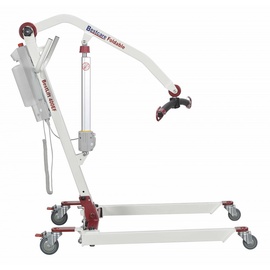
ACCESSIBLE HOUSING:
Available accessible housing and wheelchair friendly buildings determine our travel locations. We cannot stay at just any hotel, AirBnB, cabin, or friend’s house. We have to find housing along our route and at our destination that is wheelchair accessible and has a roll-in shower. Many hotels and AirBnBs that claim to be wheelchair accessible really are not, or meet the bare minimum requirements which are not enough for Angie’s mobility limitations. For example, the modern trend of hotels is to have beds that instead of having frames are on wooden or metal boxes. Those boxes block the use of our portable Hoyer style lift (a Bestcare BestLift Portable Folding Electric Lift). So, we have to call ahead to hotels to confirm if their accessible room with roll-in shower has a standard bed frame that the lift can roll under. Also, many locations that claim to be wheelchair accessible, have bathrooms that are too small or arranged in a manner that is very difficult to maneuver a wheelchair and nearly impossible to move a Hoyer style lift around. We have found Hampton Inn’s and Hiltons to be the most wheelchair friendly hotels when we travel.
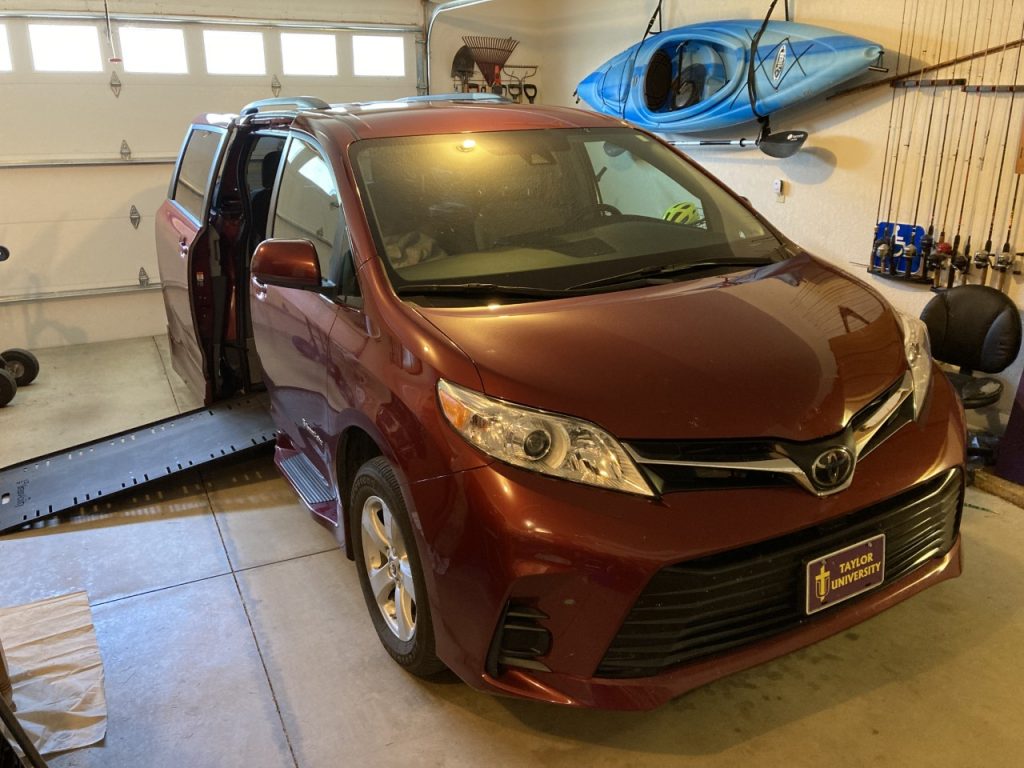
ACCESSIBLE VAN:
We currently drive a 2019 BraunAbility Toyota Sienna. When I injured my back in 2019, the doctors said we needed to upgrade to a wheelchair accessible van so I could better care for Angie and not to further injure my back by trying to lift her from the wheelchair to the passenger seat. We bought the first accessible van we could afford at the time and did not enjoy the experience. A year later, we traded it in and purchased this Toyota Sienna, and it has been a wonderful experience. Because of COVID, it did not get many miles early on, but now it has made quite a few long road trips from Indiana. This van has lowered floors and a ramp that slides out from the floor of the passenger side door. The van also lowers on hydraulics as the ramp comes out to reduce the incline into the van. Angie’s wheelchair then rolls up into the van into the passenger seat area (we removed the passenger seat so she could ride up front beside me). We then have four ratchet straps that secure her wheelchair to the van frame. She has a seatbelt within the wheelchair and uses the shoulder seat belt from the van.
BEFORE THE TRIP:
Before we ever leave on a trip, I have a week of preparations. Early the week (or two) before, I have to check the van to make sure it is all ready for the trip, taking special care to check the ramp mechanism, the ratchet straps, and all my straps and bungee cords for the luggage. The week before, I am purchasing groceries, filling water jugs, cleaning the van, and start packing a little bit each day. A day or two before, I give her power wheelchair a thorough cleaning and check it all over, and prep the house for us to be gone. I also pack at this time our manual wheelchair that we use as backup and for showers, the portal Hoyer style lift and a backup battery for it, the army bag full of accessibility items (see ARRIVAL AT HOTEL), the folding wheelchair table, and the power chargers for the lift and her power wheelchair. The day before, we finish packing our suitcases, cooler, and food bin except for the few items we need in the morning.
DAY OF THE TRIP:
Morning of the trip we are up early. Because I did a majority of the packing the day before, we can get up about two hours before we want to leave home, so typically around 6 am to be on the road by 8ish am. Our morning routing is similar to at home but with me packing and loading final items while Angie finishes getting ready for the day. I also prep our lunch for the road (fruit, chips, and a wrap or sandwich). Once she is all done with her morning routine, I help Angie put on her travel underwear which is thicker and more difficult than her normal daily underwear. I then help Angie into the van, strap in the wheelchair, load and secure any bags behind the wheelchair, prep some road snacks, program the GPS route, and we get on the road.
TRAVELING:
While on the road, we enjoy the scenery, listen to audiobooks, talk, snack, and keep moving. I take short bathroom breaks and stretch my legs every couple of hours. For lunch, we stop at a rest area, gas station, or parking lot and find a shady spot. I get in the van behind Angie and use a small stool. There I get our lunch out of the cooler and a snack bag we bring. She and I have lunch trays we use while sitting in the van. We have a relaxing lunch, then I clean it up. Once it is cleaned up I stretch my legs, take another quick bathroom break, and we get back on the road. We can usually do that in 20 to 30 minutes but will take up to an hour if the scenery is beautiful and we are doing well on time. Angie will often lean back in her wheelchair and nap in the afternoon while I am driving.
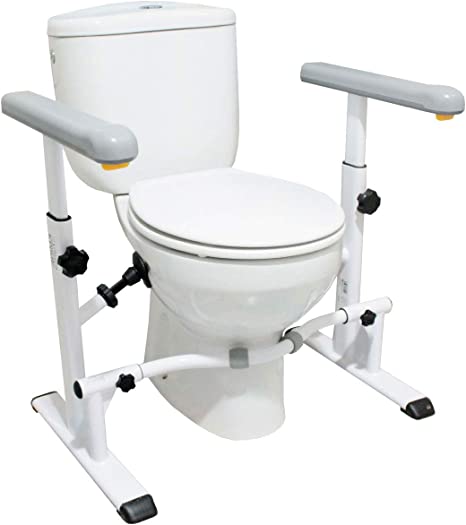
ARRIVAL AT HOTEL:
I try to keep our traveling each day in the 6 to 8 hours of driving (8 to 10 hours max traveling with lunch and bathroom breaks) so we can arrive at our destination, hotel, or home by dinner at the latest. By that time, I am getting tired, but I cannot rest yet. When we arrive at the hotel, I lower the ramp of the van, unstrap the wheelchair, then help Angie out of the van. We then go inside, check in, and head to our room. I take a quick bathroom break for myself, check the layout of the room, then go grab a luggage cart and start unloading (if I cannot get a luggage cart, it can take me 45 minutes to an hour to walk all our luggage to our room depending on what floor our room is on. With a luggage cart, I can do it in two trips of about 15 to 30 minutes total, one trip is all the luggage and the second trip is the portable Hoyer style lift. Once I have all our luggage in our room, then I start making it more accessible for Angie. First, I unfold and assemble the portable Hoyer lift which takes me five minutes or so. I then unload the army duffle bag of all its contents. I then assemble the accessibility rails for the toilet. The rails in most accessible hotel rooms are too far away from the toilet to be helpful to Angie so we bring our own. Once I have the lift unfolding and the accessible toilet rails in place, I take Angie for a bathroom break and to change her out of the travel underwear into her normal daily underwear.
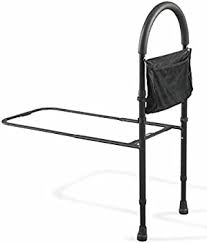
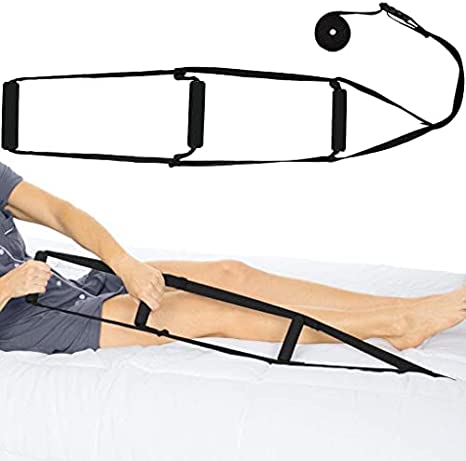
While she is having her bathroom break, I assemble a bed rail and a bed ladder for Angie to use in bed later. I then start unpacking what we need for overnight (or everything if we are staying for an extended time). Once I have prepped the accessible items, unpacked, and Angie has had a bathroom break and is back in her wheelchair, then I either go pick up dinner or order delivery of something. After dinner, I try to rest the remainder of the evening. Our night routine is is similar to at home but in a hotel.
DEPARTING FROM HOTEL:
If we are staying in the area for a while, then our morning routine is similar to at home but in a hotel. The two biggest differences when on a road trip to our normal routine are breakfast and the travel underwear. For some locations, we bring breakfast with us. In others, I go down to the hotel breakfast and bring it back to our room. Either way, we eat breakfast in our room as it is much easier than Angie trying to navigate the tight breakfast areas in hotels. After breakfast, I clean it all up, clean our dishes and Angie’s special utensils, repack them, and then get back to our morning routine. I also have to help Angie put on her travel underwear which is thicker and more difficult than her normal daily underwear. If we are planning to leave the hotel to continue our journey or to head for home, then our alarm typically goes off three hours before we want to depart (usually around 5 am). We need to be up that early so we can complete our normal morning routine plus I need to help Angie put on her travel underwear for the day, disassemble the bathroom and bed accessibility items I mentioned during ARRIVING AT HOTEL, pack our bags, get a luggage cart, load everything onto the cart, take the cart to the van, unload the cart and put it all into the van securely. I also prepare our water bottles and snacks, the GPS route, and secure all the luggage for the road trip. Once everything is loaded in the van, I return to the room for one last check of all the corners, drawers, and under the bed. I then help Angie to the front desk, we check out, I help her into the van, strap in the wheelchair, load and secure any bags behind the wheelchair, and we get on the road.
SIDE NOTE – DAY TRIPS:
Trips that do not require an overnight stay are more complicated than normal, but not overly difficult. Angie wears her travel underwear and we have to pace ourselves. I still have to help Angie drive her wheelchair into the van and strap it in securely. But, I don’t need to bring all the other accessibility items for day trips if we are just going to visit someone, see a show, go shopping, or eat out. For day trips, I try to keep the driving to under three hours in one direction. I prefer to be at a location longer than I am driving there and back. As the only driver and the caregiver, I have to watch my energy levels and my alertness. If I try to push myself too far, I can get too tired and be a risk for driving. When we get home, I need to help Angie take a bathroom break and change out of her travel underwear.
Well, that is a typical road trip for us. If you have any questions about it or area curious about other aspects of caregiving, let me know.


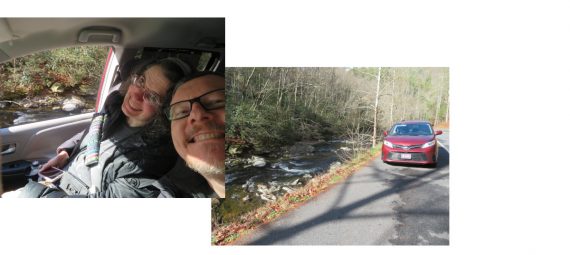
We are very thankful for your love and dedication to care for Angie. We know it takes many hours of preparation to go on trips in addition to her daily care at home. We love you!!!